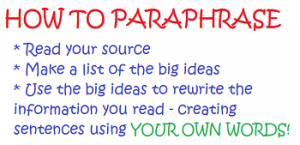 Writing is an essential skill for all of us, whether we are students or adults. In Alabama, writing is no longer part of state assessments and has been moved to the back burner, instructionally speaking, over the past 10 or so years.
Writing is an essential skill for all of us, whether we are students or adults. In Alabama, writing is no longer part of state assessments and has been moved to the back burner, instructionally speaking, over the past 10 or so years.
As many ELA-oriented professional learning folks tell us, writing is also one of the most challenging subjects (and skill sets) to teach. Ruth Culham, author of Teach Writing Well and developer of the famous 6+1 Traits of Writing instructional approach, notes:
Children don’t hate to write; they hate how we teach writing. Some of the most deeply embedded methods of teaching writing – worksheets, canned prompts and formulas, for example – drain all of the energy and desire required to write well. – Ruth Culham, “Rethinking Revision – the Real Work of Writing”
 The argument that “if something is not tested, it’s not a priority” opens up a complex conversation for another time. But when we frame writing as a powerful learning tool (rather than a ‘subject’), we begin to see how important it is across the curriculum. Book titles like teacher Mary Tedrow’s Write, Think, Learn and William Zinsser’s classic Writing to Learn remind us that writing is one of the very best ways to push our thinking deeper and expand our understanding of whatever we are studying – or we’re just plain curious about.
The argument that “if something is not tested, it’s not a priority” opens up a complex conversation for another time. But when we frame writing as a powerful learning tool (rather than a ‘subject’), we begin to see how important it is across the curriculum. Book titles like teacher Mary Tedrow’s Write, Think, Learn and William Zinsser’s classic Writing to Learn remind us that writing is one of the very best ways to push our thinking deeper and expand our understanding of whatever we are studying – or we’re just plain curious about.
It is time for all of us who support Alabama public schools to do what it takes to make the teaching of writing (using highly effective methods) an essential in every grade. Imagine how empowered our students will be if they leave school with the ability to write effectively, both in their work and in their personal lives.
Paraphrasing: A writing super power
A recent Edutopia article by Jennifer Davis Bowman highlights one important aspect of writing: paraphrasing. Paraphrasing is key to both demonstrating understanding of a concept and also to summarizing something one has learned in a paper without risking plagiarism.
 Paraphrasing is also an important note-taking (or note-making) skill. When students use paraphrasing to capture essential elements of spoken words or written text, they trigger learning centers in the brain. They make meaning. (In recent years, many college professors have bemoaned the number of students who transcribe their lectures rather than make meaning by paraphrasing. In a previous blog post, I captured the views of MIT professor Sherry Turkle about this trend.)
Paraphrasing is also an important note-taking (or note-making) skill. When students use paraphrasing to capture essential elements of spoken words or written text, they trigger learning centers in the brain. They make meaning. (In recent years, many college professors have bemoaned the number of students who transcribe their lectures rather than make meaning by paraphrasing. In a previous blog post, I captured the views of MIT professor Sherry Turkle about this trend.)
The Edutopia article features several online tools that teachers and students can use to hone their writing skills. One that I particularly found to be valuable is the Academic Phrasebank, created by the University of Manchester, which offers phrases a writer can use for various situations in academic writing. Teachers will also appreciate the list of “student cautions” when paraphrasing.
Some other writing resources
 Learning to Write, Writing to Learn – Educational Leadership
Learning to Write, Writing to Learn – Educational Leadership
A themed issue from April, 2018, with articles by Penny Kittle, Fisher & Frey, Mike Schmoker, Carol Ann Tomlinson and many others.
“The Writing Journey” (Kelly Gallagher, Educational Leadership, February 2017))
A look at a district-wide effort to improve writing instruction.
“Teach (Writing) Like a Hummingbird” (Patty McGee, Corwin Connect)
“Making Writing a Daily Ritual in Every Subject” (Mary Tedrow, MiddleWeb)
“The Secret to Teaching Writing Well” (Stacey Shubitz, Stenhouse Blog)
These are just a few conversation and idea starters. Please share additional articles, books, and tools you value as you work to improve writing instruction!

0 Comments on "How Well Are We Using Writing to Help Students Learn?"